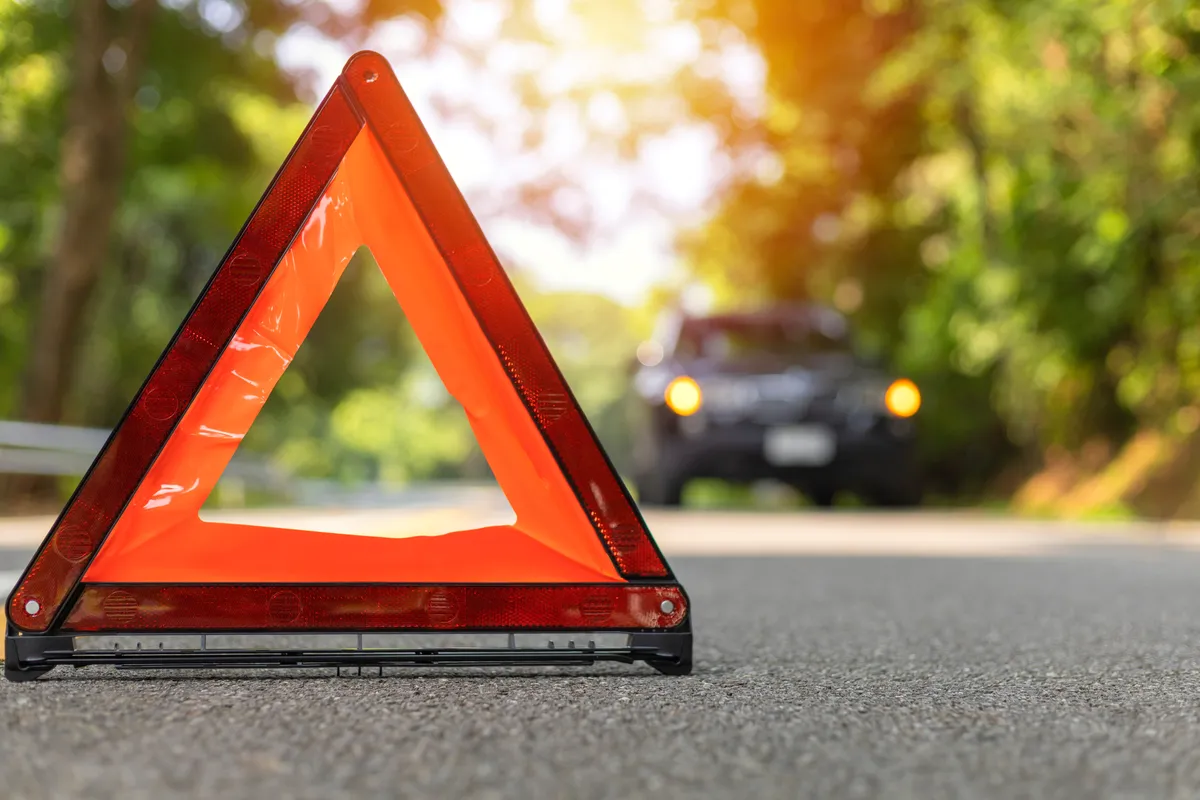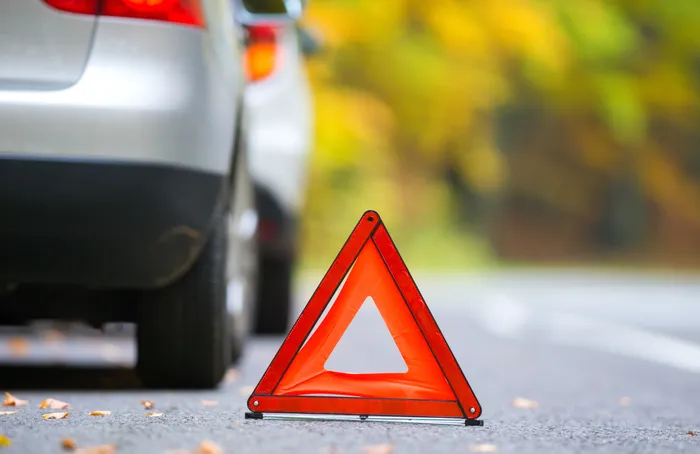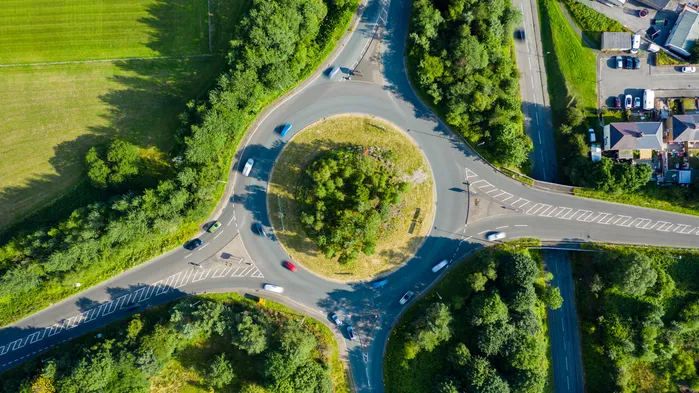5 min read time
Table of Contents

#1 Head-On Vehicle Collisions
Head-on car accidents occur when the fronts of two vehicles collide, which often occurs at high speeds, leading to fatal car crashes.
Head-on crashes are one of the most dangerous motor vehicle accidents, and they combine the kinetic energy of both cars, producing a force that can exceed the impact of a single vehicle traveling at double the speed.
Understanding the mechanics and risks of head-on collisions can help drivers recognize the importance of lane discipline and defensive driving.
Common Causes and Damages of a Head-On Car Crash
Head-on vehicle accidents are by far the deadliest type of motor vehicle accident and are caused by numerous negligent actions, including:
- Driving on the wrong lane on a two-lane road
- A drunk or impaired driver veering into the opposite lane
- Driving fatigue resulting in a sudden lane shift or drifting into the opposite lane
- Texting, eating, talking, or any other distractor that takes away from the road
- Illegal passing or wrong-way driving on a one-way road
Due to the impact force equaling the sum of both vehicles' speeds in a head-on car crash, the damages and injuries are often catastrophic.
Victims often suffer traumatic brain injury, spinal cord injuries, and internal bleeding.
And while seatbelts can reduce fatality rates, injuries often still remain severe. Legal liability usually falls on the driver who entered the opposite lane or drove while impaired, but it's still highly recommended to speak with a Las Vegas car accident lawyer from the Rodney Okano Car Accident Lawyer Law Firm, who can provide insight on whether you may be at fault for your auto accident.
How Speeds Make a Head-On Collision Even More Deadly
In a head-on collision, speed is doubled due to kinetic energy, which can turn a 30-mph vehicle impact into the equivalent of a 60-mph crash.
Even moderate speeds, such as the posted speed limit, can produce a fatal crash, especially when drivers are unaware of the oncoming traffic. Lowering speed while driving gives drivers more time to correct errors and improves survival odds, potentially reducing medical costs, property damage, and even death.
#2 Rear-End Car Accidents
Rear-end crashes occur when one vehicle impacts another from behind, and according to the National Highway Traffic Safety Administration, it's one of the most common types of motor vehicle crashes.
Rear-end accidents are commonly caused by sudden stops, distracted driving, or tailgating, and they represent a large portion of vehicle collisions in the United States. Due to how common they are, rear-end accidents easily grab a position as the #2 most dangerous type of car accident.
While injuries can often range from minor to severe, rear-end crashes can result in extensive property damage and car accident fatalities at high speeds.
How Following Too Closely Increases Your Chances of a Rear-End Accident
When a driver tailgates, the following distance can become too short to react to sudden stops. The lead vehicle may brake abruptly, leaving the rear vehicle with no time to adjust, resulting in a hard impact that can damage both vehicles involved in the collision.
The impact forces in a rear-end crash are often amplified by the lack of reaction time. Even at moderate speeds, the sudden deceleration can cause whiplash, spinal injuries, or head trauma, especially if seat belts are not used.
Drivers who ignore recommended following distances expose themselves and others to these serious injuries and damages, which can result in medical expenses, catastrophic injuries, and even a fatal car accident.
Victims of rear-end accidents should always seek a free consultation from a Las Vegas car accident attorney to at a minimum explore their potential legal rights and options for compensation.
#3 Rollover Accident
Rollover accidents are a unique category of vehicle accidents where the car flips onto its side or roof, often flipping multiple times.
Due to the rolling of the vehicle, rollover crashes often lead to severe injuries and even fatal car accidents, underscoring the importance of targeted safety measures.
Common Causes of Rollover Accidents
Most rollover accidents occur from driver errors such as overcorrecting after a sudden maneuver, speeding around turns, or driving an overloaded vehicle.
Other common causes of rollovers include:
- Overcorrecting after braking
- Speeding around turns
- Driving overloaded
- Operating vehicles with a high center of gravity (SUVs, trucks, etc.)
Rollover accidents combined with poor road conditions and a lack of seatbelt use can increase the risk of a fatal car crash, so it's crucial to ensure you adhere to seat belt laws, follow speed limits, and drive a vehicle with a good rollover safety rating.
#4 Side-Impact (T-Bone) Collisions
Side-impact accidents, also referred to as t-bone accidents, occur when the front of one motor vehicle strikes the side of another, forming a "T" shape.
T-bone crashes are particularly dangerous due to the fact that the sides of cars offer less structural protection for the occupants, such as the crumple zone, than the front or rear.
Drivers are most likely to get into a T-bone accident while performing a left turn into oncoming traffic or making a negligent lane change, in which they don't check their blind spots.
#5 Multi-Vehicle Pileups
Multi-vehicle pileups occur when one or more vehicles collide in a chain reaction, often on congested highways or during adverse weather, and can be a severe car accident type, especially if large vehicles and high speeds are involved.
Multi-vehicle auto accidents can quickly turn a minor vehicle accident into a catastrophic car wreck with compounding damage and an increased risk of serious injury or fatality.
Navigating legal options and insurance company negotiations after multi-vehicle traffic accidents can be complicated due to the number of drivers involved, so it's always recommended that if you are involved in one, you schedule a free case evaluation with an experienced attorney.
#6 Fixed Object Crashes
Fixed object crashes account for over 30 percent of all vehicle-related deaths and occur when a vehicle crashes into a solid object at high speed.
Solid object collisions often involve a vehicle striking a curb, tree, guardrail, concrete wall, or light pole, and they become deadly when drivers are distracted, under the influence, or drowsy driving.
How to Avoid Crashing into Fixed Objects When Driving
Maintain a safe distance from roadside barriers and guardrails, especially on curves and at higher speeds. Also kept an eye out for road markings and warning signs as they're meant to alert drivers of upcoming fixed objects.
Additionally, if your vehicle is equipped with the technology that uses lane-keeping assistance and forward-collision warning, it can provide early alerts to fixed objects, and along with proper speed control, these technologies lower the chance of a fixed-object impact crash.
However, defensive driving, staying alert, avoiding distractions, and anticipating road hazards, remains the most reliable method to prevent car accidents with fixed objects.
Obtain the Compensation You're Entitled To
Contact Us Today
Rodney Okano Car Accident Lawyer is a Las Vegas personal injury law firm with over 20 years of experience helping clients obtain maximum compensation following injuries from accidents such as car crashes, worksite injuries, and slips and falls. Over those years, The Rodney Okano Car Accident Lawyer Law Firm has become an experienced law firm that can ensure exceptional results for any of its clients.





